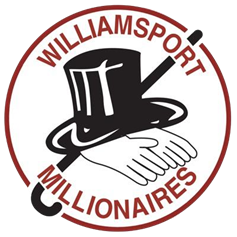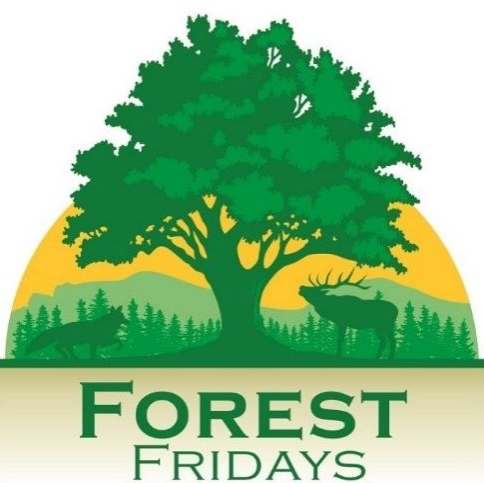
by Hannah Huber
This summer solstice, let’s consider a sunny, edible mushroom: the golden oyster (Pleurotus citrinopileatus). Popularly cultivated in the United States, but native to East Asia, the golden oyster mushroom has gilded hardwood forests across the Midwest, Mid-Atlantic, and northeast in the last decade.
Golden oysters were first reported growing in the wild in the United States in June 2014 when user travisalbertbc posted an observation on community science platform Mushroom Observer [login required]. Andi Reisdorf (née Bruce) brought attention to the golden oysters’ wild escape with her 2018 master’s thesis “Population genomic insights into the establishment of non-native golden oyster mushrooms (Pleurotus citrinopileatus) in the United States.” During Andi’s studies at University of Wisconsin-La Crosse, she found that wild golden oysters across several states were closely related to a few commercial strains, suggesting multiple human-mediated introductions. The yellow blaze has unfurled across the region ever since.
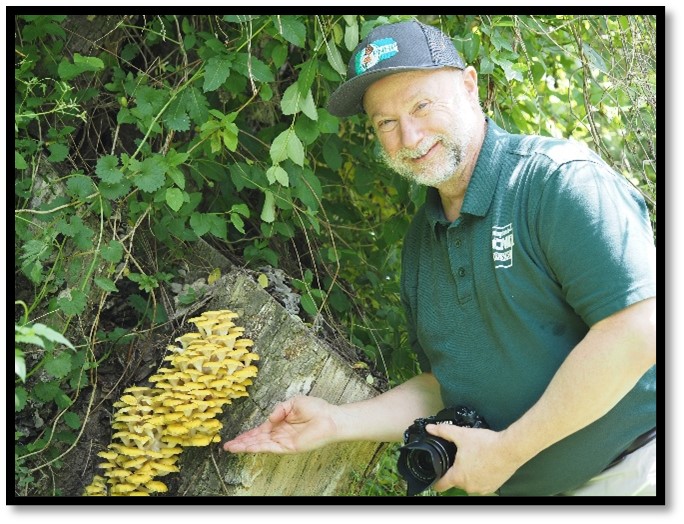
Greg Podniesinski, BOF Natural Heritage Section Chief, with golden oyster mushrooms at Shenk’s Ferry Wildflower Preserve, 2024.
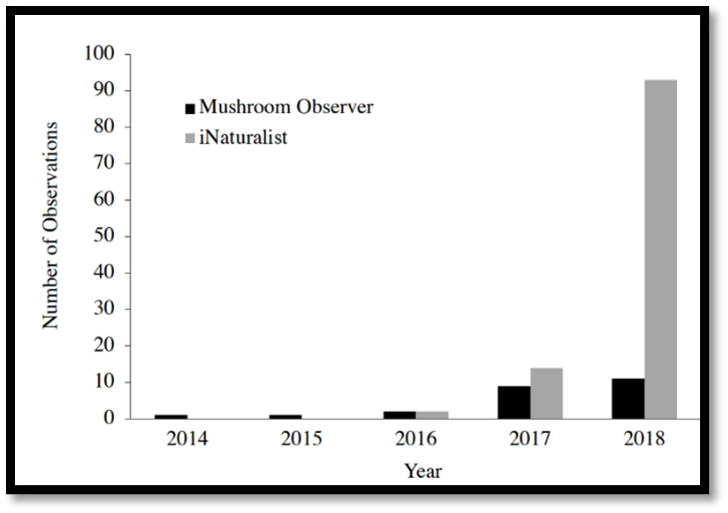
Community science observations of golden oyster mushrooms in the United States, compiled by Andi Bruce for her master’s thesis, 2018.
Now, University of Wisconsin-Madison Pringle Lab PhD candidate Aishwarya Veerabahu is evaluating whether the nonnative mushroom qualifies as invasive. She is near publishing, but recently gave a Myco-consortium Talk that alluded her results. Aishwarya extracted fungal DNA from trees with and without golden oysters, finding reduced fungal diversity in trees that hosted golden oyster mushrooms, suggesting native species displacement. In future dissertation chapters, she plans to address the questions “Are populations of golden oyster mushrooms diverging evolutionarily?” – getting at the differences between golden oysters in their native range, introduced range, and in cultivation – and “How do different groups feel about management?” You can help Aishwarya by sending her golden oyster specimens following this protocol.
Pennsylvanian mycology influencer William Padilla-Brown has called for people to stop growing golden oyster mushrooms, and Mycopolitan, a Philadelphia-based cultivation company has discontinued offering them. When harvesting golden oysters from the wild, I recommend keeping them contained in a paper bag, not loose in a basket, to avoid spreading their spores. Aishwarya suggested that industry development of sporeless strains could be a potential solution. It remains a question whether industry cultivated strains of even native mushroom species could be primed to aggressively compete with other native wild fungi. This is where stewardship and cloning of hyperlocal strains from one’s nearby woods can support endemic fungi and gourmet relationships with them.
Golden Oyster Mushroom observations on iNaturalist – LINK
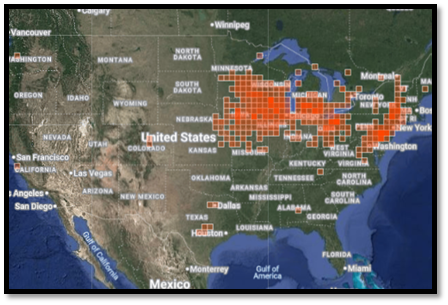
9000+ iNaturalist observations of golden oyster mushrooms in the USA as of June 20, 2025.
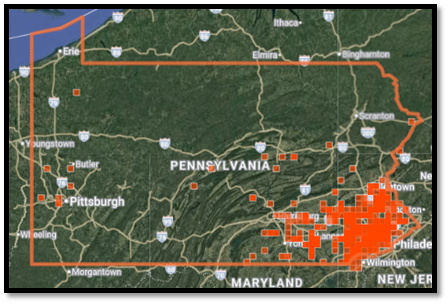
1,200+ iNaturalist observations of golden oyster mushrooms in Pennsylvania as of June 20, 2025.
Sung to the tune of “Yellow” by Coldplay
Look at the ‘shrooms
Look how they shine for you
What’s an observer to do
Yeah, they were all yellow
Your caps, oh, yeah, your caps and stems
Turn into something bodeful
And you know, you know they love you so
You know I’ll hunt you so
Spore to Fork’s 6 Best Golden Oyster Mushroom Recipes posted by Zachary Papaleoni


